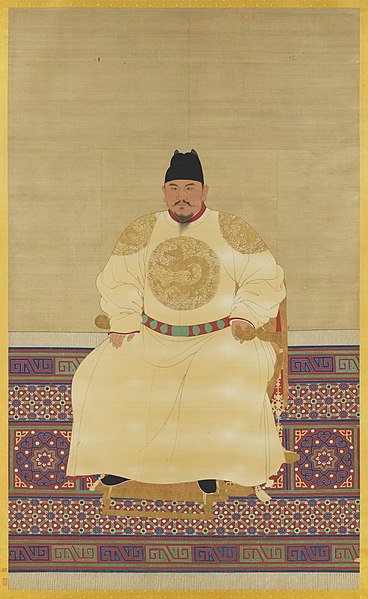The House of Zhu was the imperial ruling house of the Ming dynasty (1368–1644) and Southern Ming dynasty (1644–1662) of China.
Portrait of the Hongwu Emperor (r. 1368–98)
Portrait of the Yongle Emperor (r. 1402–24)
The Forbidden City, the official imperial household of the Ming and Qing dynasties from 1420 until 1924, when the Republican government evicted the abdicated last emperor, Puyi, from the Forbidden City.
Wanli Emperor (r. 1572–1620)
The Ming dynasty, officially the Great Ming, was an imperial dynasty of China, ruling from 1368 to 1644 following the collapse of the Mongol-led Yuan dynasty. The Ming dynasty was the last imperial dynasty of China ruled by the Han people, the majority ethnic group in China. Although the primary capital of Beijing fell in 1644 to a rebellion led by Li Zicheng, numerous rump regimes ruled by remnants of the Ming imperial family—collectively called the Southern Ming—survived until 1662.
Portrait of the Hongwu Emperor (r. 1368–98)
The Great Wall of China: Although the rammed earth walls of the ancient Warring States were combined into a unified wall under the Qin and Han dynasties, the vast majority of the brick and stone Great Wall seen today is a product of the Ming dynasty.
A 17th-century Tibetan thangka of Guhyasamaja Akshobhyavajra; the Ming dynasty court gathered various tribute items that were native products of Tibet (such as thangkas), and in return granted gifts to Tibetan tribute-bearers.
Portrait of the Yongle Emperor (r. 1402–24)








